The living room is truely the heart of any home—a space where family gathers, friends visit, and you unwind after a long day.
But creating that perfect balance of style, comfort, and functionality ain’t always easy. Whether you’re starting from scratch or just looking to refresh your space, these 21 inspiring living room ideas will help transform your room into the stylish and cozy haven you’ve been dreaming of.
Setting the Foundation: Color & Light
Before diving into furniture and accessories, let’s focus on the two elements that set the tone for your entire space.
1. Finding Your Perfect Color Palette
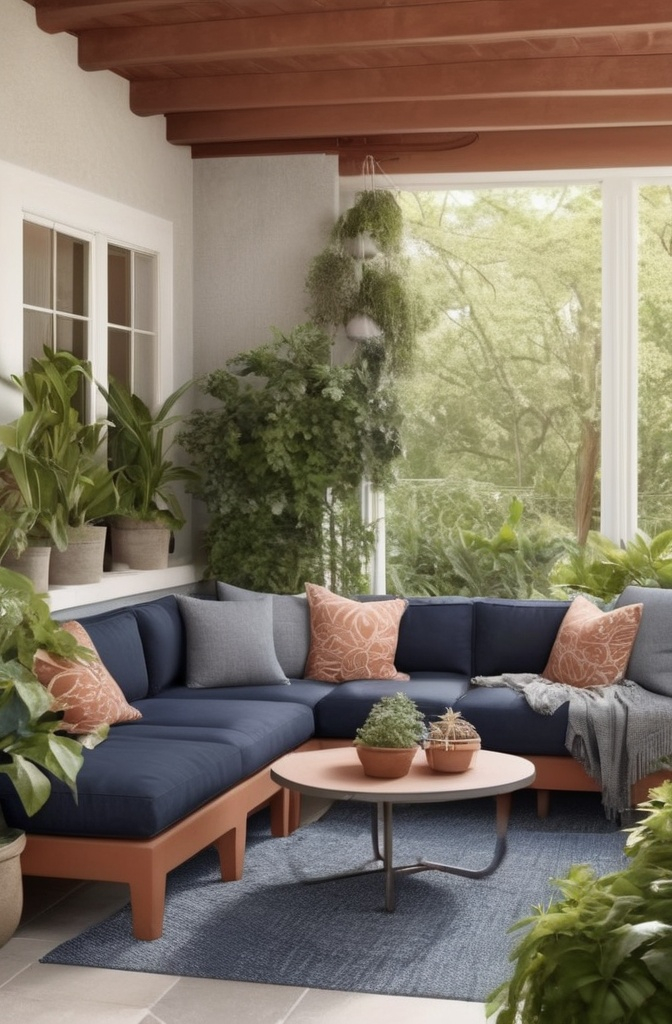
Colors do more than just look pretty—they actually affect your mood and perception of space. According to color psychology research from the University of Texas, blues and greens promote calmness, while warmer tones like yellows and reds create energy and stimulation.
For a foolproof approach to color, follow the 60-30-10 rule:
- 60% dominant color (walls, large furniture)
- 30% secondary color (accent furniture, curtains)
- 10% accent color (accessories, artwork)
“The right color palette serves as the canvas for everything else in your design,” says interior designer Emma Richardson. “It’s the foundation that ties every element together.”
Some trending combinations for 2025 include:
Mood Primary Color Secondary Color Accent Calm Sage Green Cream Terracotta Modern Charcoal Light Gray Mustard Warm Taupe Rust Navy Blue Airy Soft White Pale Blue Natural Wood
Remember that lighting conditions in your room affect how colors appear, so always test samples before commiting to a full room.
2. Strategic Lighting: Beyond Basic Brightness

Most people underestimate how critical lighting is to a successful living room. A study by the Lighting Research Center found that properly layered lighting can increase feelings of comfort by up to 35% compared to single-source overhead lighting.
For a well-lit space, incorperate these three essential layers:
- Ambient lighting: Your main light source (ceiling fixtures, recessed lights)
- Task lighting: Focused light for reading or activities (table lamps, floor lamps)
- Accent lighting: Highlights architectural features or art (wall sconces, picture lights)
Smart lighting systems have revolutionized how we light our homes. Products like the Philips Hue or Lutron Caseta allow you to create preset “scenes” for different moods and activities—movie night, reading, entertaining—with just a tap on your phone.
For rooms with limited natural light, try this designer trick: position mirrors across from windows to bounce light deeper into the space, making it feel brighter and larger.
Statement Features That Transform Spaces
Some elements have the power to completely define your living room’s character. Let’s explore these impact makers.
3. Bold Wall Treatments That Make Rooms Sing
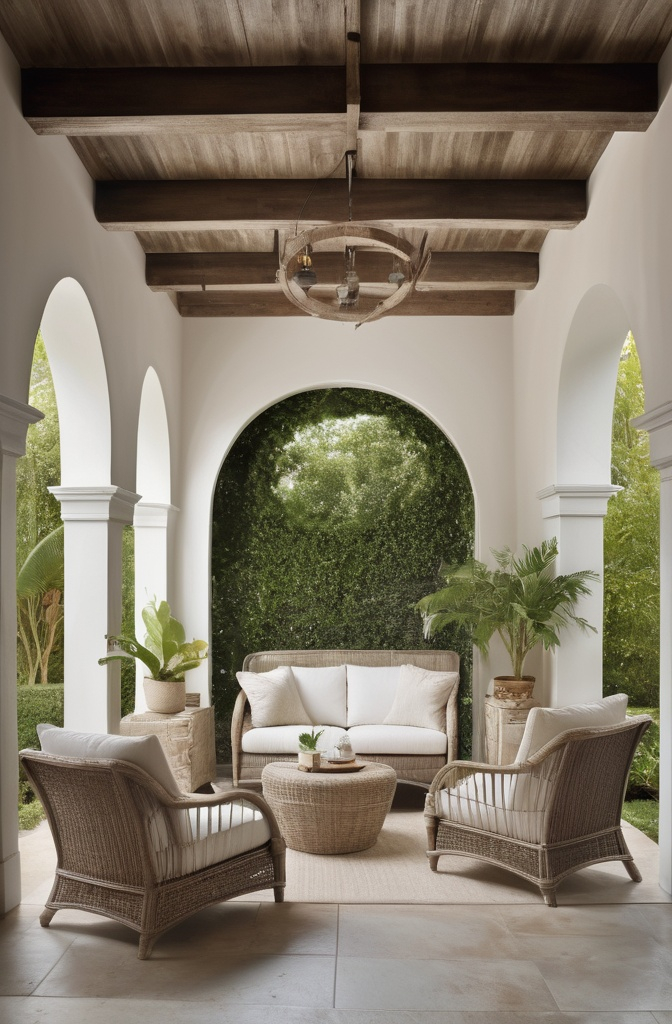
Paint is just the beggining when it comes to wall treatments. In fact, a 2024 survey by Houzz found that 68% of homeowners now incorporate some form of textural wall treatment during renovations.
Consider these options to add depth and interest:
- Textured finishes: Venetian plaster, lime wash, or suede effects
- Architectural details: Board and batten, picture frame molding, or shiplap
- Wallpaper: From subtle textures to bold patterns (removable options are perfect for renters)
“A statement wall doesn’t need to be complicated or expensive,” notes interior stylist Marcus Jones. “Even a simple color block pattern can transform a basic room into something special.”
For budget-conscious DIYers, try a geometric paint pattern using painter’s tape or a stenciled design. These projects typically cost under $100 but make a dramatic impact.
4. The Focal Point Formula: Fireplaces & Media Walls
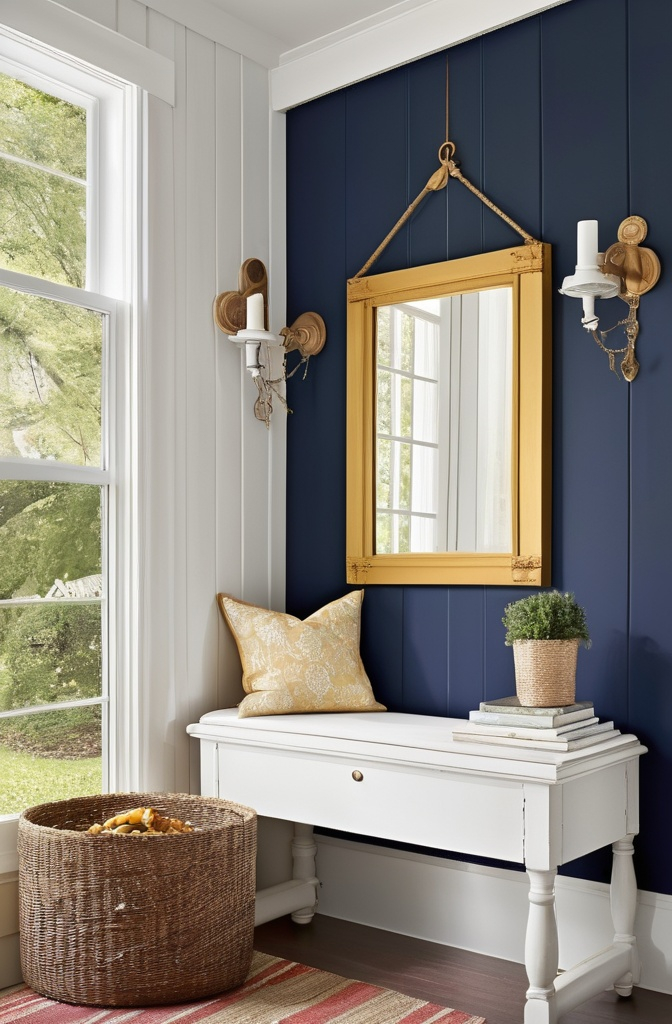
Every well-designed living room has a clear focal point—the feature that naturally draws the eye. Traditional focal points like fireplaces remain popular, but modern alternatives have evolved significantly.
For fireplace enthusiasts, bioethanol options provide real flames without venting requirements, while electric fireplaces have become increasingly realistic with 3D flame effects and customizable heat settings.
Media walls have also advanced beyond the basic TV stand. Integrated solutions that combine storage, display space, and media components create a cohesive look. According to interior design platform Modsy, requests for built-in media walls increased by 34% in 2024.
For smaller spaces, consider dual-purpose focal points:
- A TV mounted above a slim console with a decorative fire feature below
- A bookshelf wall with a central section dedicated to your television
- A statement art wall where your TV (when turned off) becomes part of the display
Furniture Selection & Arrangement
The pieces you choose and how you arrange them will determine both the style and functionality of your living space.
5. Sofa Selection: The Centerpiece Decision
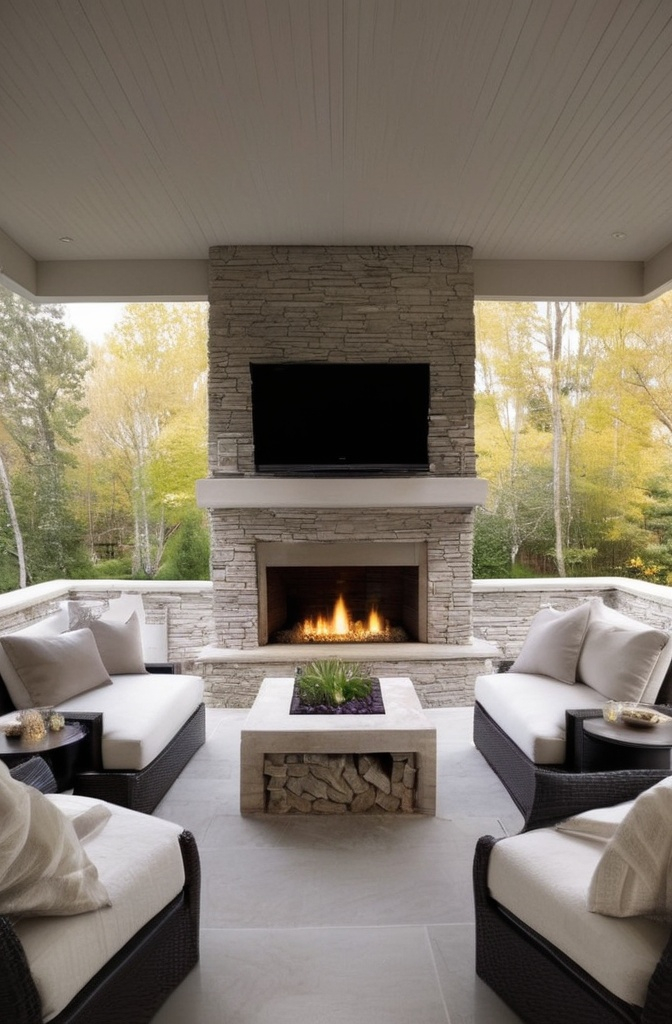
As the largest piece in most living rooms, your sofa deserves careful consideration. The American Furniture Manufacturers Association reports that the average sofa lasts 7-15 years, making it a significant investment.
When selecting a sofa frame, consider your room’s dimensions:
- For small rooms: Choose sofas with exposed legs to create a sense of openness
- For large rooms: Sectionals help fill space and define conversational areas
- For awkward layouts: Consider custom pieces or modular options that can be reconfigured
Regarding upholstery, performance fabrics have become a game-changer for families and pet owners. Brands like Crypton and Sunbrella offer stain-resistant, easy-to-clean options that dont sacrifice style for durability.
“People often buy sofas that are either too large or too small for their space,” observes furniture designer David Chen. “The perfect sofa should leave at least 18 inches for traffic paths and allow comfortable conversation with other seating pieces.”
6. Coffee Table Styling: The Art of Curation

Your coffee table is more than just a place to rest drinks—it’s an opportunity to display your personality and interests. The key to styling lies in creating balanced arrangements that remain functional.
Follow this simple formula for coffee table styling:
- Something tall (flowers, tall sculpture)
- Something horizontal (books, decorative box)
- Something personal (family photos, travel souvenirs)
- Something natural (plants, wooden elements)
For alternative options, consider:
- Nesting tables that can be pulled out when needed
- Ottoman with a tray for soft seating that doubles as a table
- A cluster of small side tables instead of one large piece
According to a Pinterest trend report, searches for “styled coffee tables” increased 120% year-over-year, indicating growing interest in this often overlooked design element.
7. Accent Chairs: Personality Punctuation Points
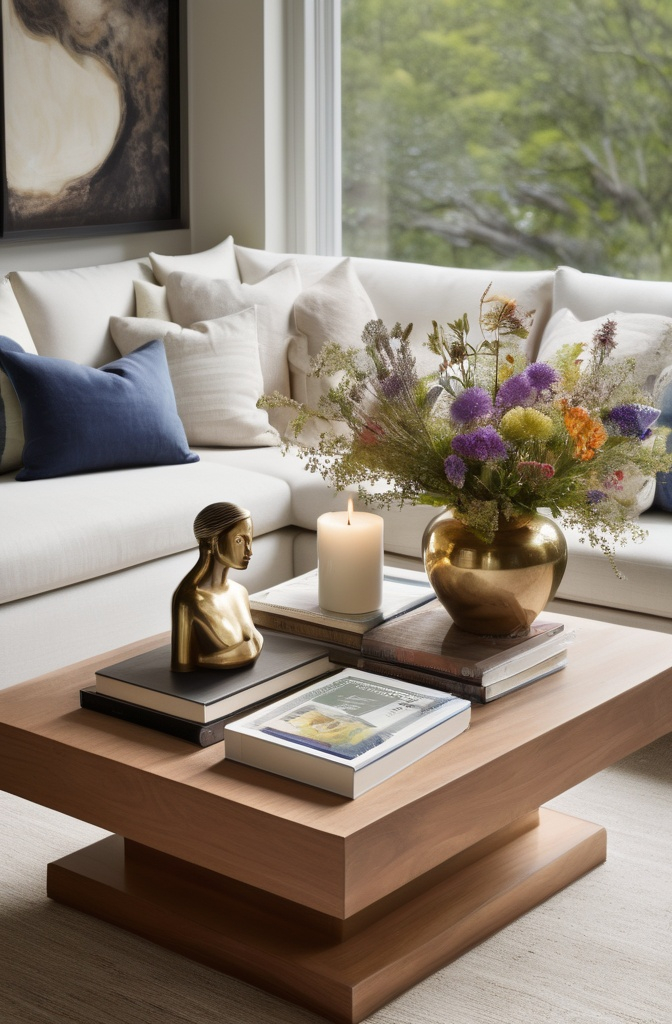
Accent chairs provide additional seating while making a style statement. They’re ideal for introducing a contrasting texture, pattern, or pop of color without overwhelming the space.
When selecting an accent chair, consider both aesthetics and comfort:
- For reading nooks: Deep, enveloping chairs with good back support
- For occasional seating: Lighter, more sculptural pieces that prioritize style
- For versatility: Swivel chairs that can face the conversation area or TV
“Don’t be afraid to mix chair styles,” advises designer Sarah Winters. “As long as they share some common element—height, color family, or era—they’ll look intentional rather than mismatched.”
Unexpected alternatives to traditional accent chairs include:
- Indoor swing chairs for playful spaces
- Oversized floor cushions for casual, bohemian rooms
- Small love seats or settees for cozy conversation spots
8. Furniture Arrangement Formulas That Always Work
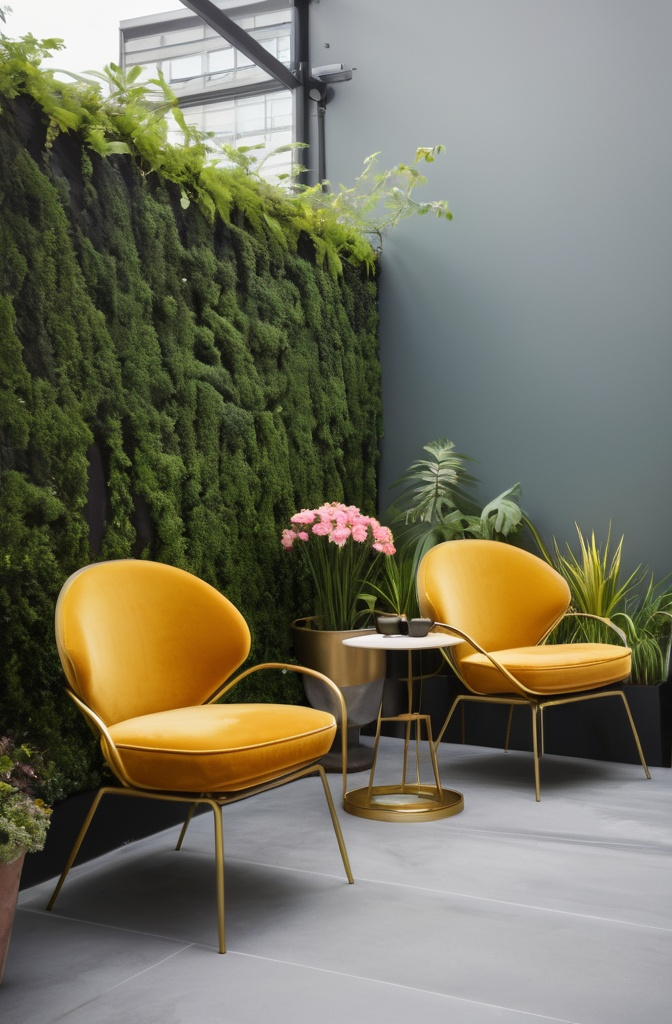
The way you position furniture affects both traffic flow and social interaction. A study in the Journal of Environmental Psychology found that furniture arrangements significantly impact conversation quality and duration.
For rectangular rooms, try these time-tested layouts:
- H-arrangement: Two sofas facing each other with a coffee table between
- U-arrangement: Sofa with two chairs at right angles, coffee table in center
- L-arrangement: Sofa and loveseat in L-shape with chair completing the conversation area
Leave at least 30-36 inches for main walkways and 14-18 inches between the coffee table and seating. Remember to create balance by distributing visual weight evenly throughout the room—pair a large sofa with two substantial chairs or a collection of smaller pieces.
For dual-purpose rooms, consider creating distinct zones with area rugs or by floating furniture away from walls to establish boundaries without physical barriers.
Read This blog: https://hometranquil.com/bedroom-designs-22-ideas/
Texture & Textiles: The Comfort Factors
Soft elements transform a stark room into a cozy retreat. These textile choices add warmth, acoustic benefits, and tactile pleasure.
9. Rug Selection & Placement Strategies
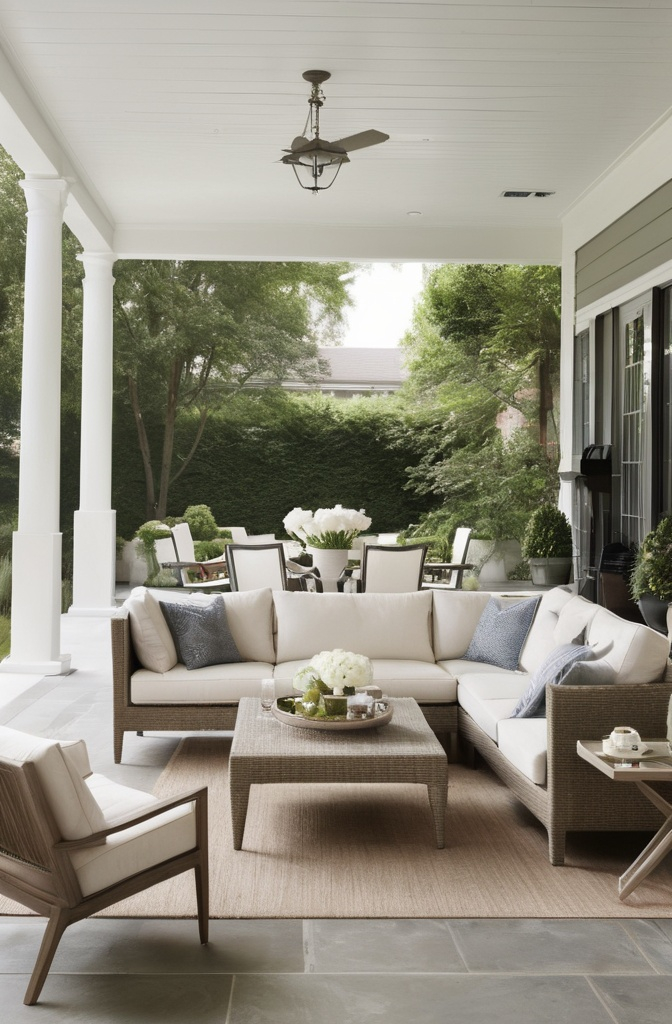
A well-chosen rug anchors your seating area and adds comfort underfoot. According to interior design platform Decorilla, the wrong rug size is among the top five design mistakes homeowners make.
Follow these sizing guidelines:
- Living room: Large enough for at least the front legs of all furniture to rest on it
- Open concept: Define distinct zones with separate rugs
- Small spaces: Cover as much floor area as possible without crowding baseboards
Material selection should reflect both your lifestyle and aesthetic:
- High-traffic areas: Wool or synthetic blends offer durability
- Low-traffic formal rooms: Silk or viscose provide luxury
- Homes with children/pets: Indoor/outdoor rugs or washable options like Ruggable
For added depth, try layering rugs—place a smaller patterned or textured rug over a larger natural fiber base. This technique adds visual interest while allowing you to incorporate smaller statement pieces without sacrificing coverage.
10. Pillow & Throw Combinations That Elevate Any Space
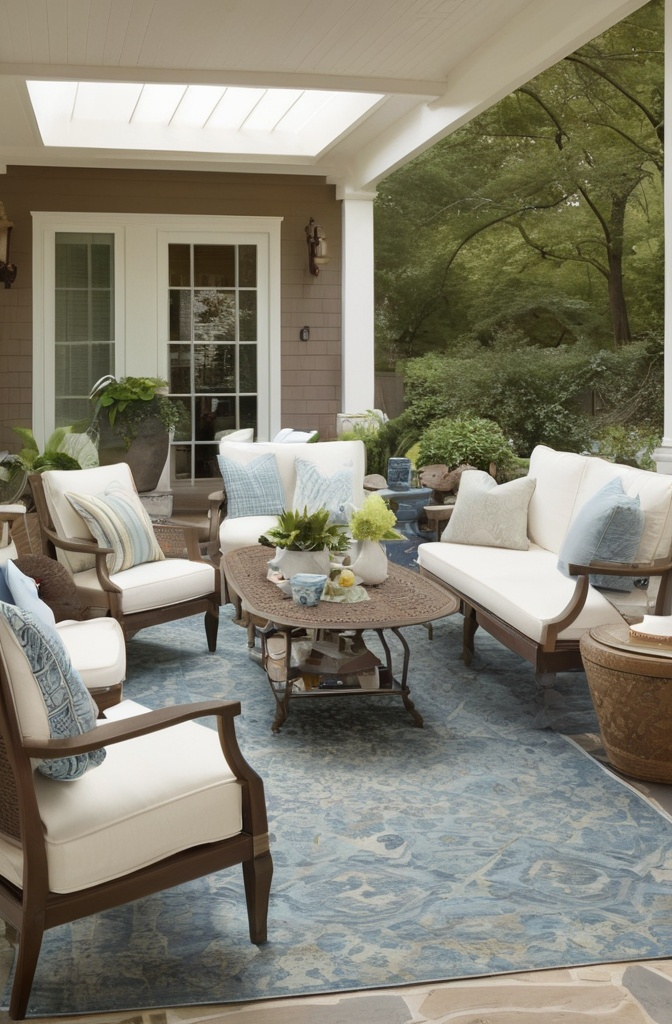
Pillows and throws are among the most affordable ways to update your living room’s look. They introduce color, pattern, and texture while enhancing comfort.
For foolproof pillow arrangements, follow these designer formulas:
- Symmetrical: Matching pairs on either end of the sofa with a contrasting center pillow
- Asymmetrical: Odd numbers of varied sizes grouped by color family
- Collected: Mix of patterns united by a common color thread
When mixing patterns, follow this simple rule of three:
- One large-scale pattern
- One medium-scale pattern
- One small-scale pattern or solid
“Changing your pillows and throws seasonally is one of the easiest ways to keep your space feeling fresh,” says textile designer Maria Gomez. “Heavier textures like velvet and wool for winter, lighter linens and cottons for summer.”
11. Window Treatments: Framing Your View
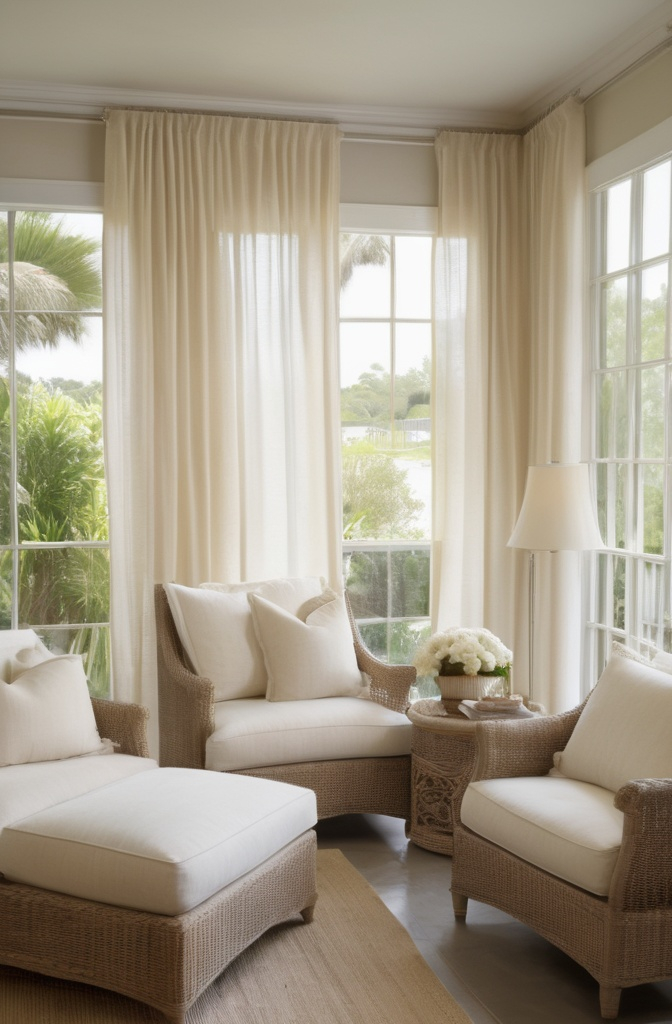
Window treatments serve both practical and aesthetic purposes—providing privacy, light control, insulation, and style enhancement.
When selecting treatments, consider your specific needs:
- Privacy concerns: Cellular shades, lined curtains, or bottom-up blinds
- Light sensitivity: Blackout options for media rooms or bedrooms
- Energy efficiency: Cellular shades can reduce heat loss by up to 40%
For maximum flexibility, layer treatments—for example, combining light-filtering sheers with room-darkening drapes. This provides options for different times of day and activities.
Installation height also matters tremendously. Hanging curtain rods 4-6 inches above the window frame and extending 8-12 inches beyond the window’s width creates the illusion of larger windows and higher ceilings.
Space Optimization Solutions
Whether you’re working with limited square footage or an open floor plan, these strategies help maximize both functionality and style.
12. Small Living Room Magic: Making Limited Space Feel Luxurious
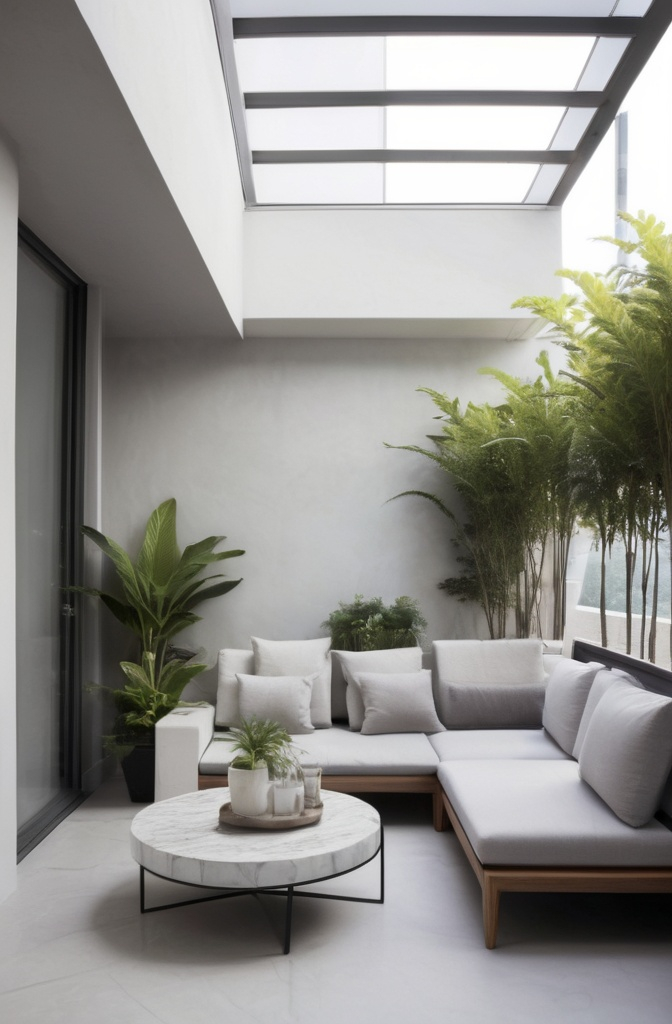
Small spaces require strategic thinking but can be just as impactful as larger rooms. A recent survey by Apartment Therapy found that 72% of respondents living in spaces under 1,000 square feet prioritized multi-functional furniture.
Try these space-maximizing techniques:
- Choose scale-appropriate furniture: Apartment-sized sofas and loveseats prevent overwhelming the room
- Utilize vertical space: Floor-to-ceiling bookcases or shelving draw the eye upward
- Incorporate mirrors: Strategically placed mirrors create depth and reflect light
“The best small spaces embrace their coziness rather than fighting against it,” notes small space specialist Nina Garcia. “Intentional design always trumps square footage.”
Multi-functional pieces worth investing in include:
- Storage ottomans that serve as coffee tables, extra seating, and storage
- Extendable console tables that transform into dining tables
- Nesting tables that can be separated when additional surface area is needed
13. Open-Concept Living: Defining Zones Without Walls
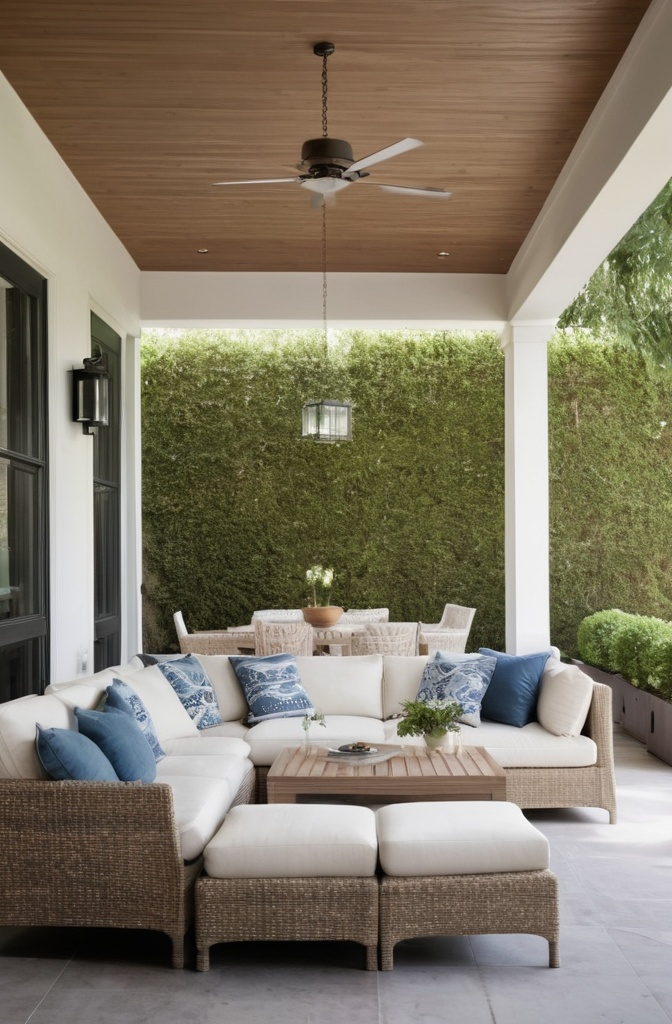
Open floor plans offer great flow and connection but present challenges in defining distinct areas. Creating visual boundaries helps establish purpose without sacrificing openness.
Effective zoning techniques include:
- Area rugs: Different rugs clearly delineate living, dining, and transition spaces
- Lighting: Pendant lights or chandeliers centered over functional areas
- Furniture arrangement: Back-to-back sofas or console tables act as room dividers
“Consistency in color palette and materials throughout an open concept space is crucial,” advises architect Thomas Ryu. “While each zone can have its own character, they should speak the same design language.”
Consider using large furniture pieces like bookcases or console tables as room dividers—they provide separation while maintaining sight lines and light flow. For added effectiveness, place them perpendicular to walls to create natural entry points between zones.
14. Storage Solutions That Don’t Sacrifice Style
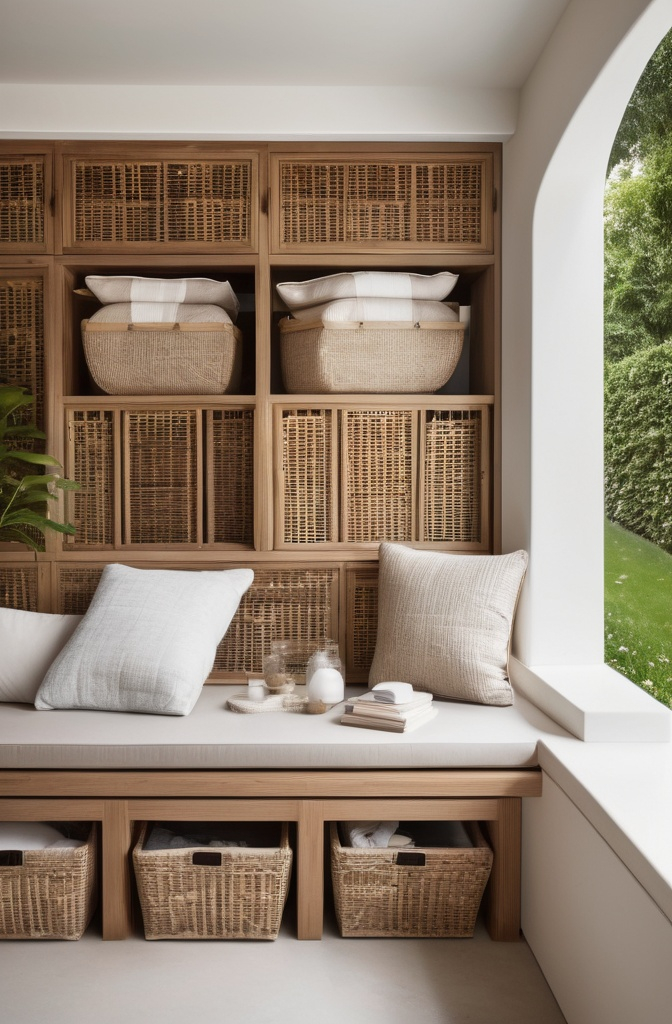
Clutter is the enemy of stylish living rooms. Incorporating smart storage solutions helps maintain visual calm while accommodating life’s necessities.
Hidden storage options include:
- Ottoman coffee tables: Open to reveal blanket storage
- Built-in window seats: Lift-top designs conceal seasonal items
- Side tables with cabinets/drawers: Perfect for remote controls and small electronics
For items you want to display, curated storage becomes part of your decor:
- Floating shelves: Showcase books and objects while using minimal visual space
- Decorative baskets: Corral toys, magazines, or technology in attractive containers
- Vintage trunks: Serve as coffee tables while storing rarely-used items
“When designing storage, think about what you use daily versus occasionally,” recommends organizing expert Jennifer Morris. “Daily items deserve accessible spots, while seasonal things can be tucked away more deeply.”
Adding Character & Personality
What transforms a well-designed room into a personal sanctuary are the elements that reflect who you are. These finishing touches make your space uniquely yours.
15. Art Selection & Gallery Wall Creation
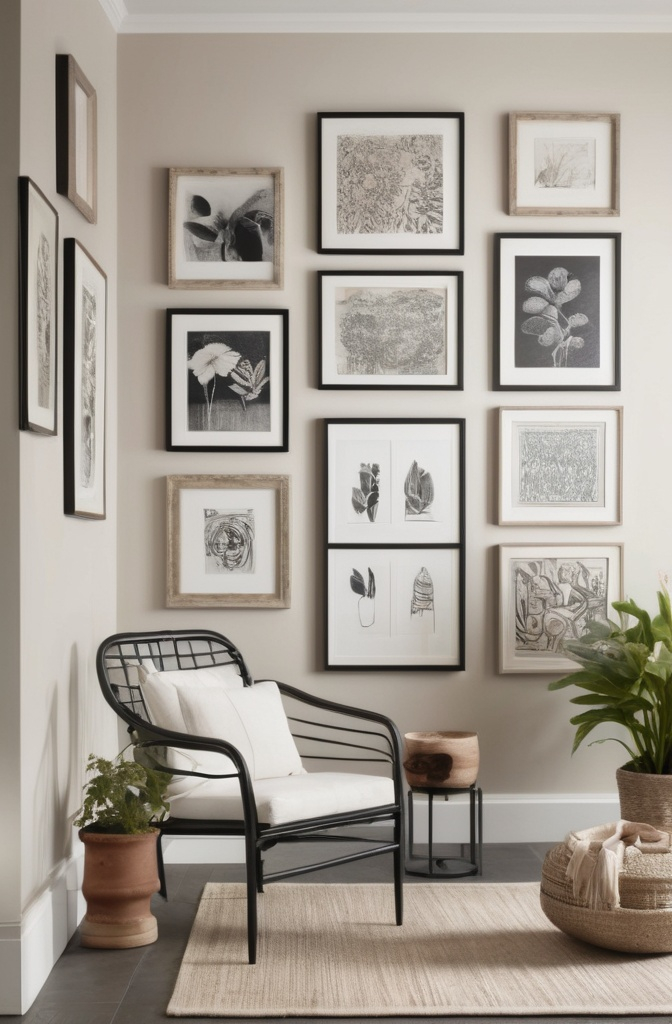
Art creates emotional resonance in living spaces. According to a study in the Journal of Interior Design, rooms with personally meaningful art were rated significantly higher in comfort and satisfaction by occupants.
When selecting art, consider:
- Scale: Pieces should generally be 2/3 to 3/4 the width of the furniture beneath them
- Placement: Center at eye level (approximately 57-60 inches from the floor)
- Content: Choose subjects that evoke positive emotions or memories
For gallery walls, try these designer approaches:
- Salon-style: Mix of sizes and frames united by color theme or subject matter
- Grid arrangement: Same-sized frames in perfect alignment for a modern look
- Organic grouping: Asymmetrical arrangement that grows over time
“Don’t rush to fill your walls,” cautions art consultant Michael Zhang. “Meaningful curation happens gradually. It’s better to have empty space than art that doesn’t speak to you.”
Budget-friendly art sources include:
- Online printable art platforms like Etsy and Society6
- Student art shows at local colleges
- Vintage book plates or botanical prints framed individually
16. Incorporating Plant Life: The Living Elements
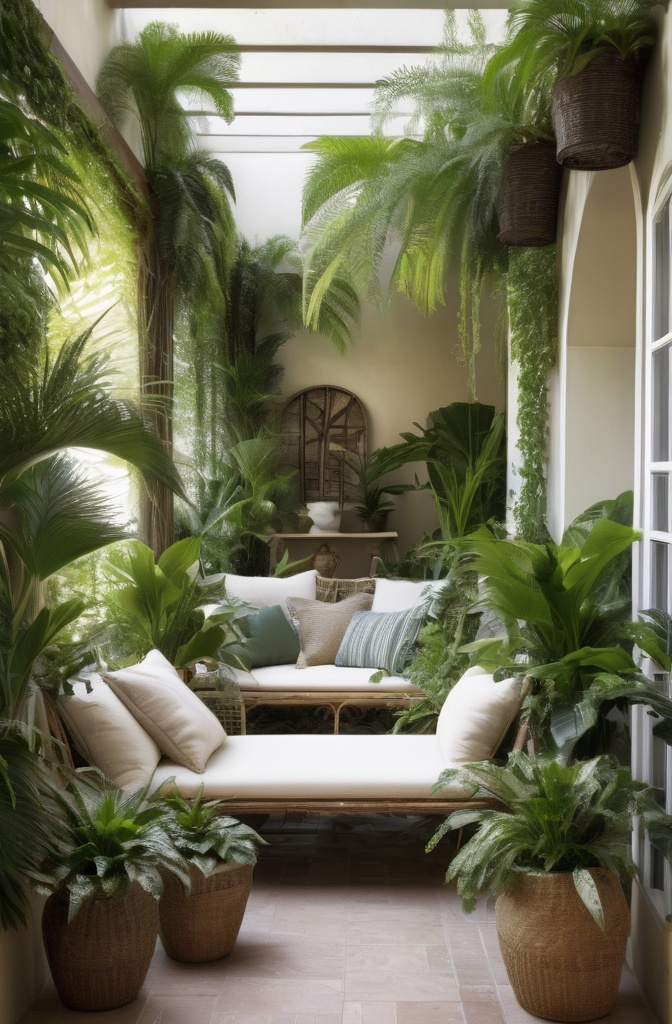
Plants do more than just look good—they improve air quality, boost mood, and add life to interior spaces. A NASA study found that houseplants can remove up to 87% of air toxins within 24 hours.
For low-maintenance options suited to different light conditions:
- Low light: Snake plants, ZZ plants, pothos
- Medium light: Peace lilies, philodendrons, ferns
- Bright light: Fiddle leaf figs, succulents, citrus trees
When it comes to styling with plants, consider these approaches:
- Statement plants: One large floor plant as a focal point (fiddle leaf fig, bird of paradise)
- Clustered arrangements: Groupings of varied heights and textures
- Hanging installations: Macramé planters or ceiling-mounted options to save floor space
“Plants bring a room to life in a way no other accessory can,” observes botanist and interior stylist Dr. Jamie Wong. “They respond to their environment, change with the seasons, and create a connection to the natural world.”
17. Bookshelf Styling: Between Function & Display
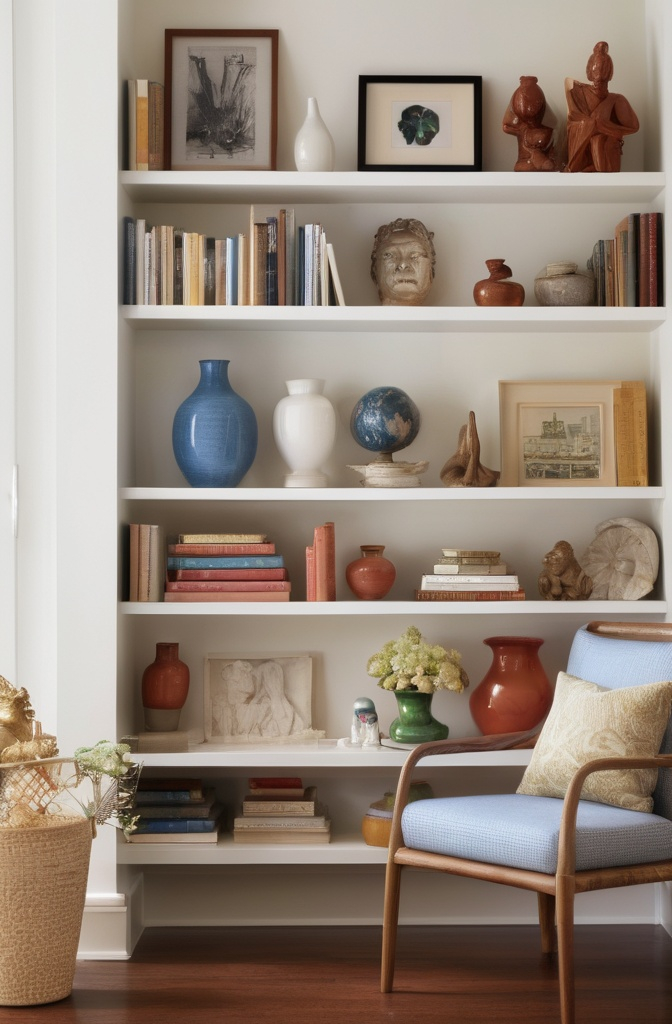
Bookshelves offer dual functionality—storing your literary collection while showcasing your personality through thoughtful arrangement.
For visually appealing bookshelf organization:
- Leave breathing room: Fill shelves to 70-80% capacity for a curated look
- Vary arrangements: Mix horizontal and vertical stacking
- Incorporate objects: Break up book sections with plants, photographs, or decorative items
Color organization has become increasingly popular, but consider these alternative approaches:
- Subject grouping: More practical for finding specific books
- Size arrangement: Creates clean, architectural lines
- Chronological display: Showcases your reading journey over time
“Bookshelves tell your story through the titles you choose to display,” says literary interior designer Rebecca Chen. “Don’t hide the books that shaped you, even if they don’t match your color scheme.”
Style-Specific Approaches
While good design principles apply universally, specific styles have their own defining characteristics. Let’s explore three popular approaches.
18. Modern Minimalism: Intentional Simplicity
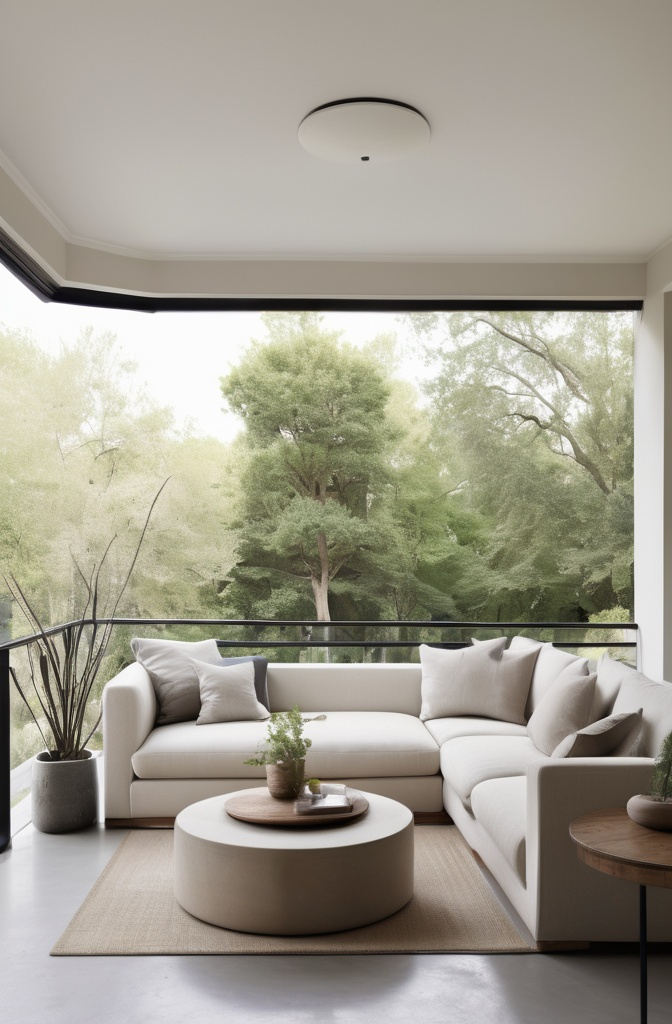
Minimalism isn’t about emptiness—it’s about intentionality. Every item serves a purpose, whether functional, aesthetic, or ideally both.
Essential elements that define minimalist spaces:
- Clean lines: Furniture with simple, geometric forms
- Limited color palette: Usually neutral with perhaps one accent color
- Quality over quantity: Fewer, better pieces rather than numerous items
To prevent minimalist rooms from feeling cold or sterile, incorporate varied textures:
- Contrast soft and hard surfaces: Wool throws on leather seating
- Mix finish types: Matte and glossy surfaces in the same color family
- Incorporate natural materials: Wood, stone, or plant elements
“Successful minimalism requires excellent organization systems behind the scenes,” notes minimalist architect Celia Park. “What looks effortless actually requires disciplined curation and hidden storage solutions.”
19. Eclectic Charm: Mixing Periods & Patterns
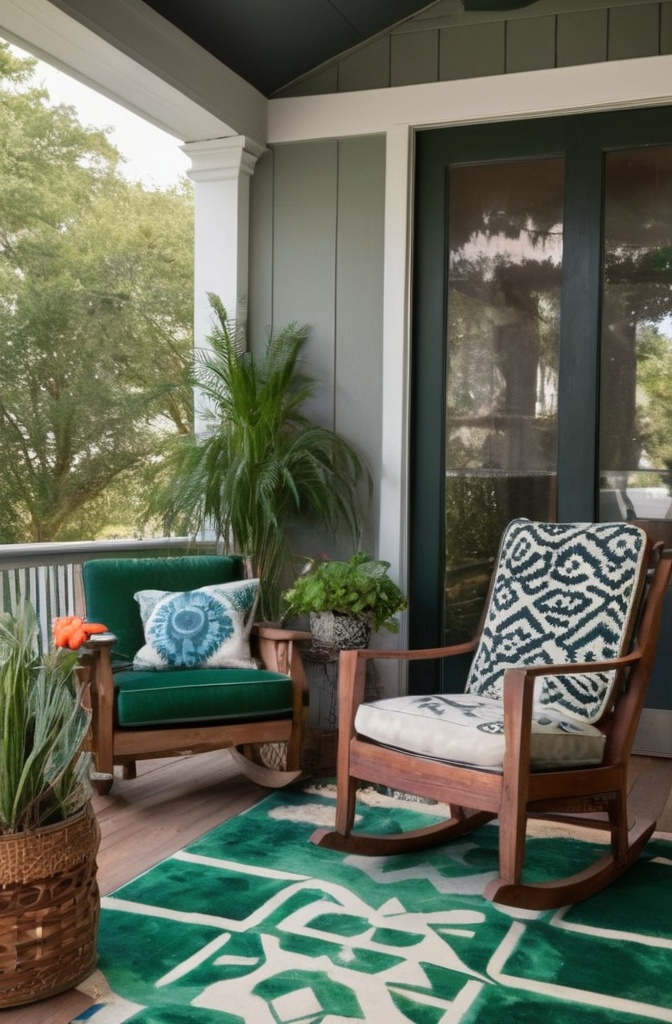
Eclectic spaces celebrate diversity while maintaining harmony. They allow for personal expression through unexpected combinations.
To create cohesion among diverse elements:
- Consistent color thread: Repeat 2-3 colors throughout disparate pieces
- Balanced distribution: Space statement pieces evenly throughout the room
- Unified materials: Incorporate similar materials across different styles (brass accents on both modern and vintage pieces)
For pattern mixing that works:
- Vary scale: Combine large, medium, and small patterns
- Limit palette: Keep patterns within a defined color family
- Mix pattern types: Pair geometrics with florals or organics with stripes
“The most interesting rooms have a story to tell,” says eclectic designer Rafael Martinez. “When everything matches perfectly, you lose the narrative that makes a space truly memorable.”
20. Timeless Design: Elements That Never Go Out of Style
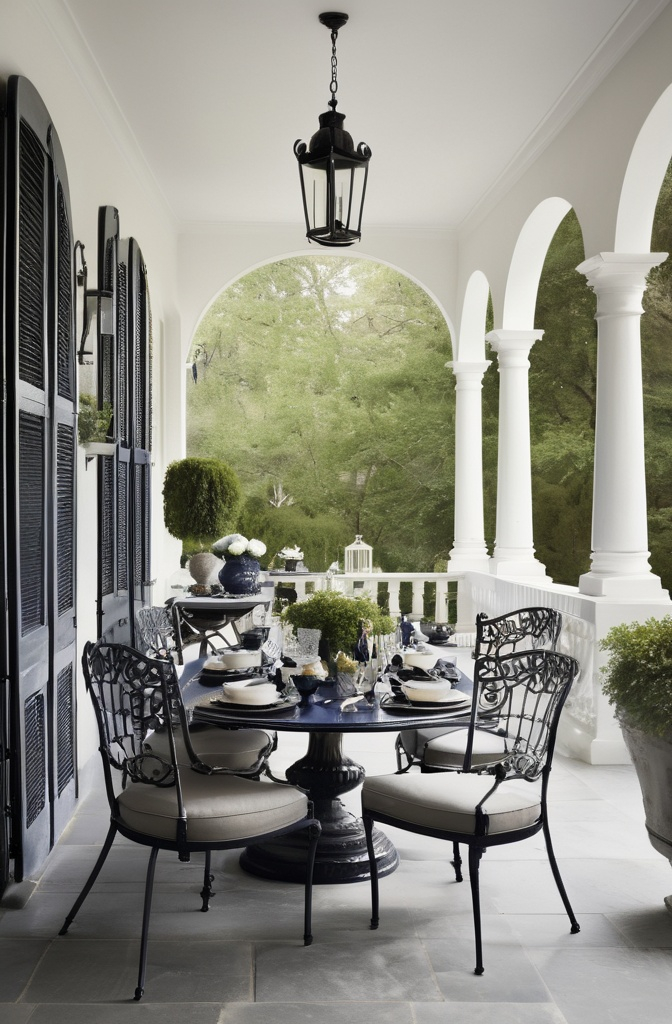
While trends come and go, certain design principles remain consistently appealing across decades.
Investment pieces worth splurging on:
- Well-constructed sofa: Classic shape in a neutral upholstery
- Natural wood case goods: Quality wooden pieces develop character with age
- Authentic materials: Real marble, solid wood, and genuine leather develop patina over time
Classic proportions that withstand trend cycles:
- The golden ratio (1:1.618) applied to room dimensions and furniture groupings
- Symmetrical balance in formal spaces
- Rule of thirds in art placement and shelf styling
“Trend-proof rooms focus on human comfort and function first,” observes design historian Patricia Quinn. “The most enduring spaces prioritize how people live rather than how design magazines photograph.”
Finishing Touches
These final elements tie everything together and elevate the overall design.
21. Mirror Placement for Light & Spaciousness
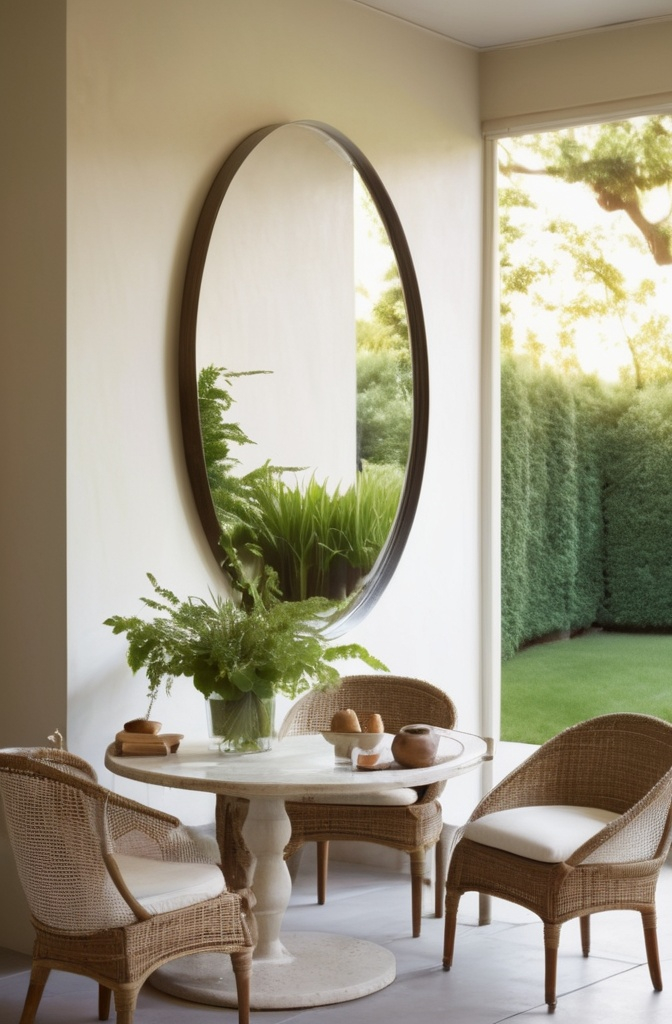
Mirrors serve both practical and aesthetic purposes in living rooms. They reflect light, create the illusion of depth, and offer decorative impact.
Strategic positioning tips include:
- Opposite windows: Amplifies natural light throughout the space
- Above fireplaces: Traditional placement that draws attention to architectural features
- Behind lamps: Multiplies light output in dark corners
For statement mirrors as art alternatives:
- Oversized leaning mirrors: Create dramatic impact in contemporary spaces
- Sunburst or unique frames: Function as decorative focal points
- Antiqued or smoked glass: Adds depth and character beyond simple reflection
“Mirrors are the secret weapon of small space design,” reveals interior photographer Alex Santos. “They’re the closest thing we have to actual magic in interior design—making rooms literally appear larger than they physically are.”
Frequently Asked Questions
How can I make my living room feel cozy without sacrificing style?
- Layer textures with throw pillows, rugs, and cozy blankets, while using warm lighting and comfortable furniture to balance both style and comfort.
What are the best colors for a small living room to make it feel bigger?
- Light neutrals like beige and soft grey can make a small room feel larger, with accent colors adding personality without overwhelming the space.
How can I incorporate a statement wall into my living room design?
- Use bold paint, textured wallpaper, or large art on a focal wall to create a standout feature that draws attention.
What furniture pieces are essential for a cozy living room?
- A comfortable sofa, coffee table, accent chairs, and soft lighting are essential for creating a cozy and functional living room.
How do I arrange furniture in a small living room for maximum space?
- Opt for multifunctional furniture and keep seating around a focal point, leaving enough room for easy movement to maximize space.
Conclusion
Creating a stylish and cozy living room isn’t about following rigid rules or chasing every trend. It’s about understanding timeless principles while infusing your unique personality and lifestyle needs into the space.
The most successful living rooms evolve over time, collecting stories and memories along with their furnishings. They balance aesthetic appeal with genuine comfort and functionality.
Remember that your living room should reflect who you are—not just what’s currently trending on social media. By incorporating elements that truly speak to you, you’ll create a space that feels both inspiring and authentically yours.
What living room design ideas have you implemented in your home? Share your transformations and experiences in the comments below!
